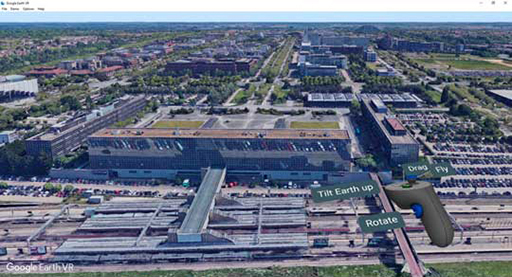6 Thinking about system innovation
The OECD (2015) defines system innovation ‘as a conceptual framework for understanding and managing transitions in response to radical technological and social change’ in both industry sectors and places in city, regional or national contexts. This reflects the influential research by Frank Geels, who understands system innovations in terms of ‘socio-technical transitions’ in response to major challenges (Geels, 2005; 2011).
Instead of defining system innovations in terms of the technical workings of a closed system, this approach recognises that system innovation is fundamentally sociotechnical (i.e. social and technical) and that when it happens, it involves a transition to a new sociotechnical system. You might be used to thinking about systems in purely technical terms, so it is of note that this definition extends to cover social change as well. This is because system innovations are never simply technical and will usually involve people, even if it is just as users.
-
Based on your learning so far, what is system innovation?
-
System innovation refers to the introduction of a new or improved system in response to technological and social change to fulfil a societal and/or economic function. This is a transition from an old to a new sociotechnical system and involves potential changes to a system or to any of its components, such as goods, services, buildings and infrastructures, accepted practices, and people associated with the system.
Many smart city projects are good examples of initiatives designed to bring about system innovations. An example was initiated through the MK:Smart programme (MK:Smart, 2020) as part of the UK Milton Keynes Future City Programme. Led by the OU, this involved collaborations between Milton Keynes Council, British Telecom and other business and universities. A new ICT infrastructure centred on a data hub, which draws together city datasets relevant to city functions to develop smart innovative solutions across transport, energy, water, enterprise, citizen engagement and education.

System innovations can be the most challenging type of innovation to work on because they involve change at the highest level of a complex sociotechnical system, in which there are many interacting subsystems and sub-subsystems leading to many different outcomes and impacts. The results can be difficult to predict and manage.
Activity 2: Examples of innovations
Think of some examples of innovation that align with the discussion set out so far in this course. They might refer to your interests or could include a current innovation in your organisation, sector or field of work.
| Type of innovation | Examples |
| Product innovation (goods) | |
| Product innovation (services) | |
| Process innovation (e.g. production, marketing, organisational, distribution and logistics, information and communication technology (ICT) systems, process development and so on) | |
| System innovation |
Comment
Here are some suggested examples of different types of product, process and system innovations.
| Type of innovation | Examples |
| Product innovation (goods) | The first smartphone, IBM’s Simon Personal Communicator integrated the functions of a cellphone and personal digital assistant (PDA), including phone and email communications, contact information, calendar management, document and spreadsheet management etc. |
Product innovation (services)
|
Seller feedback – the idea of sellers and customers rating each other on apps such as eBay and Uber services. |
| Process innovation (production) | Henry Ford’s standardised mass production processes for manufacturing the Model T car in 1908. |
| Process innovation (marketing and sales/after sales) | Amazon Marketplace, the global online retail platform for goods and services, which rocketed Jeff Bezos from online bookseller to tech titan. |
| Process innovation (organisational e.g. innovation in business practices, workplace organisation, external relations, and administration and management practices) | The transition to online (and hybrid) work communication practices during the COVID-19 pandemic, using digital technologies like Teams and Zoom. |
| Process innovation (distribution and logistics) | Asset Tracking of mobile goods across the world by combining Global Positioning System (GPS) tracking software with cellular positioning technology in real-time. This is often combined with other technologies to monitor the conditions (e.g. temperature) applicable to products in transit.
|
| Process innovation (information and communication technology (ICT) systems) | Integration of artificial intelligence (AI) technologies into business and management processes to support enhanced capabilities through automation of administrative, financial, HR and other management processes, and through data analytics and predictive learning to support customer engagement. |
| Process innovation (process development) | The production of the musical score for the Denis Villeneuve’s 2021 film ‘Dune’ led by Hans Zimmer, which required the invention of new instruments to create original sounds, including a house sculpted by Chas Smith to function as a musical instrument. The score in ‘Dune’ brings sculptured sounds together with rhythmic banshee singing, compressed voice chanting and new sounds using cellos, bagpipes and newly constructed flute type instruments (Zimmer, 2022). |
| System innovation | City and regional electric vehicle (EV) automobility systems, with EV charging infrastructure, such as in Coventry, Brighton and Hove, Milton Keynes. |
